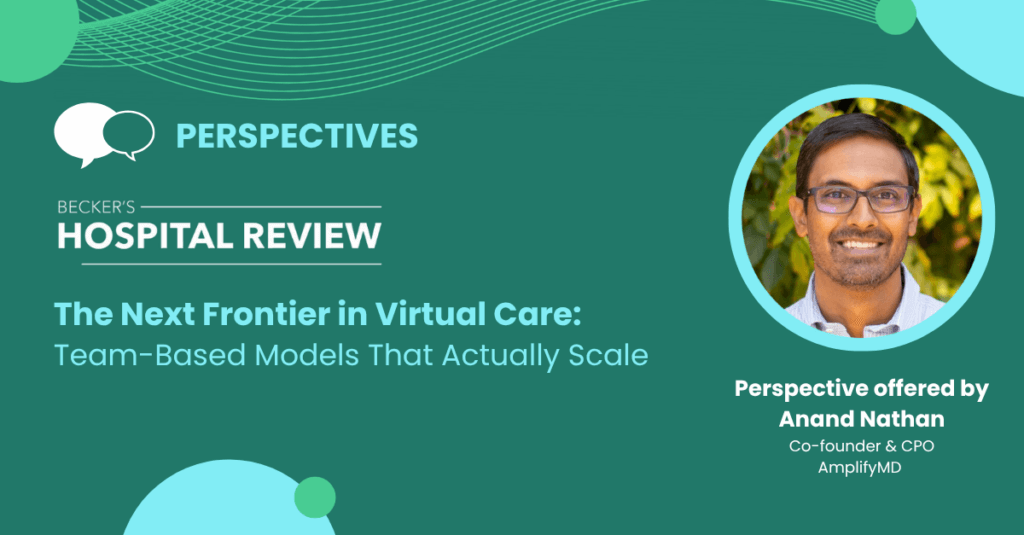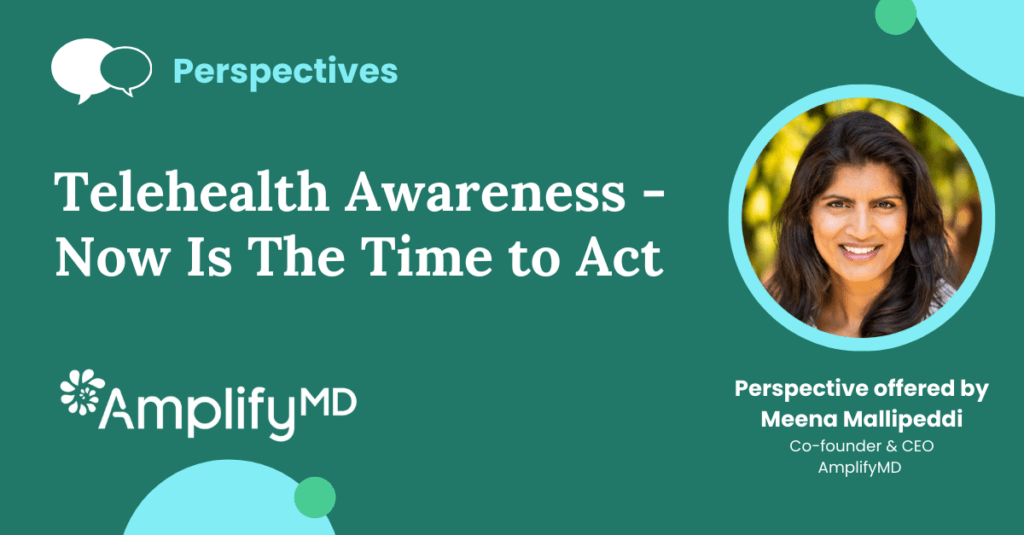AmplifyMD’s CEO, Meena Mallipeddi, regularly speaks with innovative healthcare leaders on her podcast, The Seamless Connection. This Q&A comes from her conversation with Ann Mond Johnson, CEO of the American Telemedicine Association. (The podcast conversation has been edited and condensed.)

Ann Mond Johnson
Chief Executive Officer
American Telemedicine Association
What brought you to the ATA, and what is its mission?
I’ve been with the organization for just over five years. I came to it after a series of startups, all in healthcare, the last three of which worked with healthcare data, decision support tools, and digital mobile apps to help consumers navigate the healthcare system. I’ve been a big proponent of consumerism in healthcare, and I saw telehealth as a natural extension and expression of consumerism in healthcare.
It’s been an honor and a privilege to lead the ATA, which represents over 400 organizations that either deliver telehealth or enable the delivery of telehealth. We’re really here to ensure that telehealth – technology-enabled care, broadly defined – is accepted as a modality of care and that it’s not viewed, treated, or regarded as a different type of medicine. It is the only way we can reasonably ensure that all Americans get care where and when they need it and that when they do, they know it’s safe, effective, and appropriate.
What has been the most positive impact for telemedicine because of the pandemic?
Prior to the pandemic, there were a lot of myths or misperceptions about telehealth, including that it was not as good as in-person care. Now, many clinicians and citizens have tried telehealth and are finding that it does deliver a high-quality experience. And several recent studies have shown that a telehealth consultation is as good as, and in some instances, better than, in-person care. Knowing that you can’t reach everyone if you don’t utilize technology-enabled care really addressed the access issue. The ATA is working thoughtfully and deliberately to ensure that the waivers enacted during the pandemic become permanent and the in-person requirements go away once and for all.
How can telehealth address disparities in healthcare access?
The opportunity is to partner with local trusted sources – churches, schools, neighborhood organizations – that are engaged and committed to a healthy community. I spoke with a cardiologist in a large metropolitan area. He described a program where medical students were used to reach out to people at risk in the community. And it was viewed as a very trusted operation with a huge uptake. This notion of people wanting to take care of themselves, if given the opportunity, and working with sources that they trust does have momentum, and it can be successful.
I heard you had a personal experience with telehealth before joining the ATA. Can you share it?
I was skiing, and I broke my shoulder. Following surgery, I had virtual physical therapy and was absolutely blown away by that experience for a few reasons. First, going virtual meant I didn’t have to travel to the hospital for PT. I couldn’t drive, and it avoided getting jostled on a bus because, with a broken shoulder, it’s incredibly uncomfortable. But my other thought was this is just so easy. And I could do it when I wanted to, so I controlled the time. When I talk about telehealth being consumerism in healthcare, that’s part of it. When I got recruited to run the ATA, I had this great experience and thought, who could object to this?
I see telehealth as an opportunity and obligation to get things right. We have issues of access to care across the United States, and you can’t solve for those without using technology to reimagine how care is delivered, from access to specialists to primary care to mental health care. That’s really my personal driver, to make sure we get it right this time.
Listen to Ann Mond Johnson’s entire conversation with Meena Mallipeddi on Episode #19 of The Seamless Connection podcast hosted by Slice of Healthcare.





